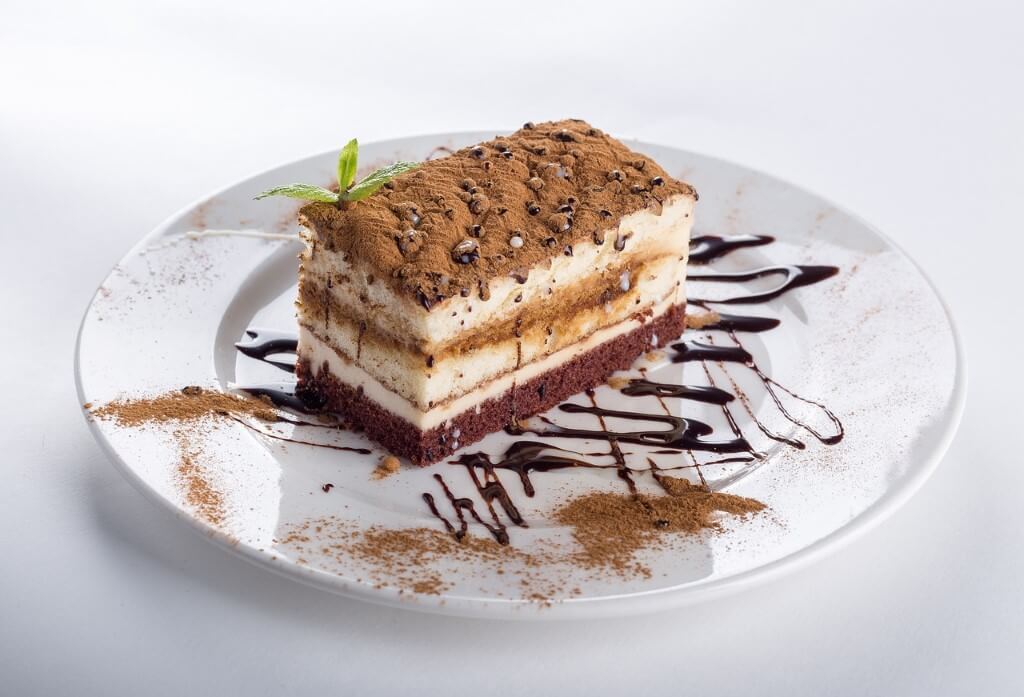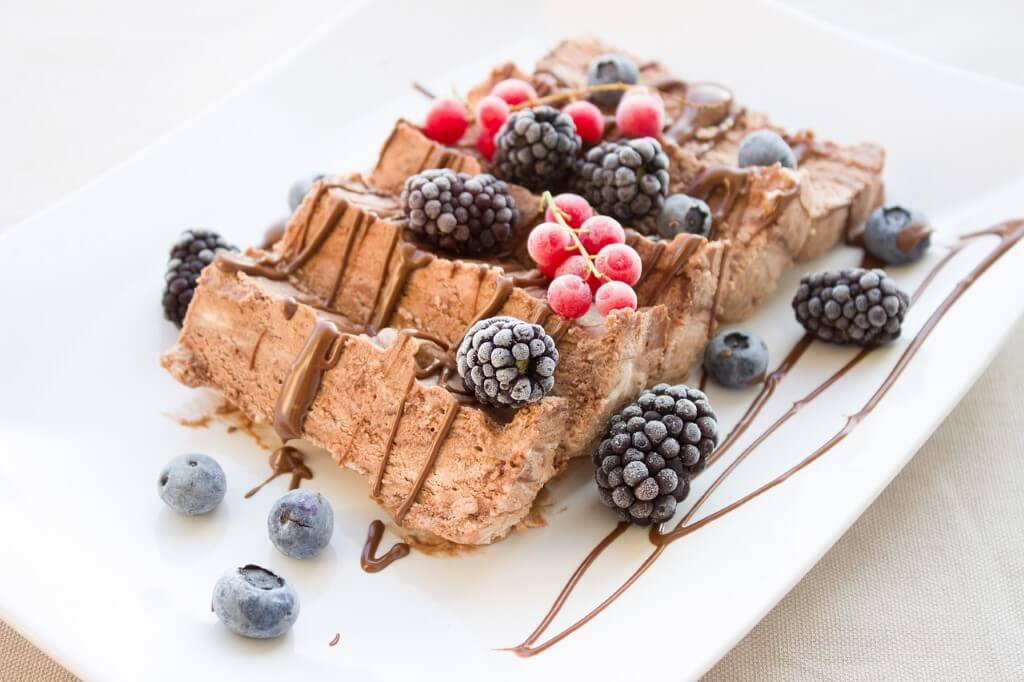Why were desserts first eaten? well! for thousands of years, dessert has been a cherished course in human culture.
Dessert has evolved from ancient civilizations to modern cuisine, adjusting to shifting tastes and new ingredients. It is a sweet dish, frequently rich and indulgent, meant to sate the sweet tooth and complete a meal.
The word “dessert” comes from the French word “desservir,” meaning “to clear the table.” This makes sense because originally, desserts were eaten to get rid of the taste of a big meal by having something sweet.
In this article, we will delve into the fascinating past of desserts and trace their development from prehistoric times to the present.
Discover Why Were Desserts First Eaten?

Desserts have been a part of human cuisine for centuries, and there are several theories about why they were first eaten. One of the most common explanations is that desserts were initially consumed as a way to mark special occasions and celebrations.
People would gather together to enjoy sweet treats after a meal, as a way to symbolize the end of the meal and to celebrate their good fortune. Another theory is that desserts were initially consumed as a way to preserve fruits and other sweet ingredients.
In many ancient societies, sugar and honey were precious commodities, and people would use these sweeteners to preserve fruits and other ingredients for later consumption. This would allow them to enjoy sweet treats throughout the year, even when fresh fruits were not in season.
Finally, it is also believed that desserts were first eaten as a way to signal wealth and status. In many societies, owning sugar and other sweet ingredients was a sign of wealth, and consuming sweet treats was a way for people to show off their prosperity.
This would help to reinforce social hierarchies and establish the status of those who could afford to consume sweet treats.
When Did People First Start Eating Dessert?

According to Krohn and Ottolenghi, the seventeenth century marked a turning point in the evolution of desserts, with the increased availability of sugar and the development of new techniques and ingredients.
Before this time, sweet treats were generally simple and limited in variety, but with the widespread use of sugar and other sweeteners, desserts became more diverse and sophisticated.
The seventeenth century saw the emergence of the first patisseries and confectioneries, where pastry chefs and confectioners could experiment with new ingredients and techniques.
Who Invented Eating Dessert?
The concept of eating desserts is ancient and has been a part of human culture for thousands of years.
People have been enjoying sweet treats since ancient times, with the first recorded instances of dessert-like foods dating back to ancient civilizations like the Egyptians, Greeks, and Romans.
It is difficult to identify a single person or culture as the inventor of eating dessert.
The practice of consuming sweet dishes after meals has evolved and developed over time, influenced by various cultural, historical, and social factors.
However, it is safe to say that the tradition of eating dessert has been around for centuries and continues to be an important and enjoyable part of many cultures around the world.
The History of Desserts

Desserts have been a staple of human culture for thousands of years, satisfying our sweet tooth and marking special occasions.
From ancient civilizations to modern-day gastronomy, the history of desserts is a rich tapestry woven with cultural influences, technological advancements, and culinary innovations.
Below, we will delve into the evolution of desserts, tracing their journey from simple sweet treats to the decadent and sophisticated creations of today.
So grab a fork and let’s dive into the sweet world of dessert history!
The evolution of dessert
The history of dessert is a fascinating journey through time and across cultures.
From the sweet cakes and pastries of ancient civilizations to the technologically advanced creations of modern-day gastronomy, desserts have transformed.
The availability of sugar and new ingredients, as well as technological advancements and globalization, have all played a role in shaping the desert landscape.
Whether it’s a simple fruit tart or a complex molecular gastronomy creation, desserts continue to evolve and adapt, reflecting the changing tastes and preferences of society.
The enduring popularity of dessert
Despite its evolution, the popularity of dessert has remained constant throughout history. People have always had a sweet tooth, and desserts continue to satisfy that craving.
Whether it’s a special treat or a staple of a meal, dessert is an important part of our diets and culture.
The allure of dessert is not limited to taste either; its presentation and the emotions it evokes play an important role in its enduring popularity.
The role of dessert in contemporary society

In today’s world, dessert continues to play an important role in society. It is a symbol of celebration and indulgence, marking special occasions and serving as a reward for a job well done.
Dessert also has a place in everyday life, satisfying cravings and offering a moment of respite from the hustle and bustle of daily life.
With its rich history and enduring popularity, dessert is an integral part of our cultural heritage and an essential part of our diets.
Whether it’s a simple treat or a culinary masterpiece, dessert will always have a special place in our hearts and on our plates.
#Ancient Desserts
The history of dessert dates back to ancient civilizations, where sweet treats were enjoyed by royalty and commoners alike.
In ancient Egypt, honey cakes were a staple dessert, often served with fruit-filled pastries.
The ancient Greeks also enjoyed sweets, with honey-soaked cakes and fruit-based desserts being popular choices.
In ancient Rome, nut-based confections and sweetened fruits were enjoyed as desserts.
#Medieval Desserts
During the medieval period, the Arab world had a significant influence on dessert. The Arabs introduced sweet and savory pastries to Europe, as well as the use of rose water and orange blossom water in confectionery.
European medieval desserts included gingerbread and honey cakes, as well as tarts and custards.
#Renaissance Desserts
The Renaissance saw a major shift in the world of dessert, as sugar became more readily available and new ingredients were introduced.
Sugar was used to create marzipan and sugar sculptures, while new ingredients like chocolate and coffee were incorporated into desserts.
Ice cream and sorbets also became popular during this time.
One of the most notable innovations of the Renaissance was the use of sugar in confectionery. This new ingredient allowed for the creation of sweets that were sweeter and more decadent than ever before.
Sugar was used to create marzipan, a type of almond paste that could be molded into intricate shapes and used as a decorative element in desserts.
Sugar sculptures were also popular, often depicting scenes from mythology or daily life.
The Renaissance was also a time of exploration, with new ingredients and recipes being introduced from across the globe.
Chocolate, which was first discovered by the Aztecs, was brought to Europe and quickly became a popular ingredient in desserts.
Coffee, which was originally used for medicinal purposes, became popular as a drink and was soon being used in confectionery as well.
#Modern Desserts
The Industrial Revolution marked a major turning point in the history of dessert, with mass production leading to the development of packaged desserts.
The standardization of recipes and ingredients allowed for mass production and distribution, making desserts accessible to more people.
Globalization has also had a major impact on desserts, with international cuisine influencing the creation of fusion desserts.
From Japanese-inspired mochi to French macarons, the fusion of flavors and techniques has led to new and innovative desserts.
Presentation has also become an important part of contemporary dessert culture, with many desserts being as much about their appearance as their taste.
The rise of molecular gastronomy has also impacted the dessert world, with chefs using science and technology to create new and unique flavors and textures.
This has led to the creation of desserts that are not only visually stunning but also incredibly delicious.
